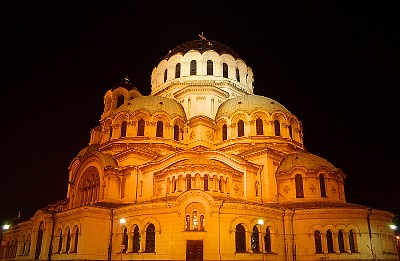CHALLENGES IN MODERN ASTROPHYSICS
Notes
Few words:
Sofia (Bulgarian: Ñîôèÿ) is the capital and largest city of Bulgaria and the 12th largest city by population in the European Union, with 1.4 million people living in the Capital Municipality. It is located in western Bulgaria, at the foot of Mount Vitosha, and is the administrative, cultural, economic, and educational centre of the country.
One of the oldest cities in Europe, the history of Serdica-Sredets-Sofia can be traced back some 7000 years; prehistoric settlements were excavated in the centre of the present city, near the royal palace, as well as in outer districts such as Slatina and Obelia. The well preserved town walls (especially their substructures) from antiquity date back before the 7th century BC, when Thracians established their city next to the most important and highly respected mineral spring, still functioning today. Sofia has had several names in the different periods of its existence, and remnants of the city's millenary history can still be seen today alongside modern landmarks.

Climate:
Sofia has a humid continental climate with high temperature amplitudes. The hottest month is August while January is the coldest. Up to 1936 the average annual temperature was 10.0 °C (50 °F) and since then it has risen by +0.5 °C (+1 °F). The city receives around 650 millimetres (25.6 in) annual precipitation with summer maximum and winter minimum. The temperatures in Sofia generally remain cooler than other parts of Bulgaria in summer, due to the high altitude of the valley in which it is situated. However temperatures can still reach up to 40 °C on occasions.
The weather in autumn in Sofia is essentially influenced by the big cyclones and fronts from North-West Europe and the warm south air masses, usually preceding them. So, the average daily temperatures during the autumn frequently are from five to eighteen degrees Celsius. But, it could be extremely worth for you at any rate to keep in mind that in October and even later in November in the Bulgarian capital there could be comparatively long periods - up to two weeks - with very warm weather, typically called "gipsy summer". On the other hand, the second half of November and beginning of December are often foggy and rainy and it gradually gets colder.
October temperatures:
Average high - 16°C
Average low - 7°C
Weather site - http://sinoptik.bg/#
Source: Wikipedia (http://en.wikipedia.org/wiki/Sofia)